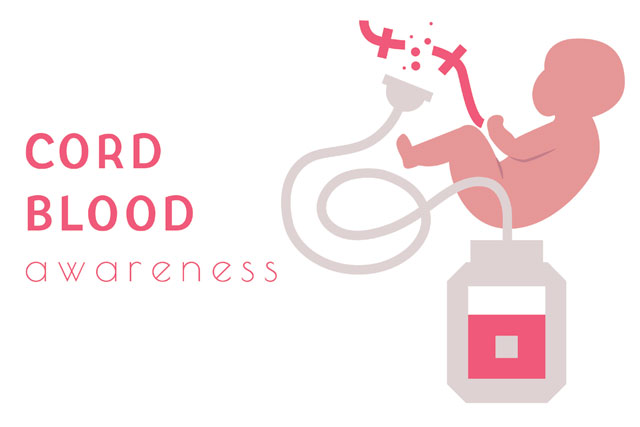Currently, the percentage of banking cord blood in the United States is estimated at 3%. Until the year 2018, the popularity of cord blood collecting was high. The tendency to collect and store cord blood is still high in some countries, like Singapore. However, the figures in the US have been decreasing steadily as some oncologists claim that haploidentical bone marrow transplants are better than cord blood transplants.
Anyway, some properties of stem cells are unique and cannot be replaced by the bone marrow. This is the reason many parents still choose to collect blood from their baby’s umbilical cord and store it in blood banks, which, in fact, is what cord blood banking is.
There are two types of cord blood banks: private and public. Let’s learn a bit more about each of them.
Private
As the name suggests, a cord blood private bank is a type of blood bank that charges fees for its services. Such banks store cord blood intended for the so-called autologous transplantation, which is the transplantation of stem cells to the person they’ve been collected from. Such organizations are also preferable for storing the blood for direct donation, which means this blood is intended for a specific person, like a family member.
How much does cord blood banking cost if stored in private banks? The total cost may vary depending on the duration of storage, the number of units kept, and the bank you choose. Therefore, you won’t know the exact price until you figure out all those details. Anyway, all private banks charge several types of fees from their clients, including:
- the fee for collecting the umbilical cord blood;
- the fee for its testing and registering before storage;
- annual storage fees for preserving the unit.
The figures named by the American Academy of Pediatrics range from $1350 to $2350 for the pre-storage services. Add here $100 – 175 of annual fees, and you’ll get the approximate cost.
Public
Storing the cord blood in a public blood bank is available to everyone who seeks this service as it requires no payment. Basically, you donate the blood to the bank so it can be used for other people in need of such treatment. Public banks work with allogenic (non-family) transplantations. Still, they can store blood for direct donation if there’s a person in your family who suffers from a health condition that can be cured with the stem cells found in the cord blood.
What Is Cord Blood Banking Used for?
Cord blood is a source of hematopoietic stem cells. They possess unique properties that allow them to mature in different types of cells found all over the human body. Stem cells are widely used in the treatment of severe and often life-threatening health conditions. According to the American College of Obstetricians and Gynecologists, the transplantation of hematopoietic stem cells can cure more than 70 diseases, including:
- leukemia;
- Immune system disorders;
- spinal cord injuries;
- heart disease;
- Alzheimer’s;
- osteoarthritis;
- lymphoma, and some other types of cancer.
Parents often see cord blood banking as insurance for any possible health issues that may affect their babies in the future.
The cord blood can be used for the baby’s sick sibling as they often make a perfect donor-recipient match.
Finally, the donated blood from public banks can be used for any person requiring transplantation if they match well enough for the procedure to be successful.
Procedure Details
If you make a decision to collect your baby’s umbilical cord blood, you should start preparing for the procedure at least 2-3 months before your due date.
Preparing
To donate to the public bank, you should do the following:
- Talk to your OB-GYN about your desire to collect the umbilical cord blood. Ensure that the hospital where you are going to give birth provides such a service.
- Check if your medical insurance covers this procedure. Some hospitals charge an extra fee for collecting cord blood.
- Notify the bank a minimum of 6 weeks before the expected delivery date. Once you do this, you’ll be sent a special kit for collecting the material.
- Provide complete information on your family medical history (like any genetic abnormalities, chronic conditions running in the family, etc.). Pass some blood tests to ensure you have no genetic disorders or infections (HIV, hepatitis, and others).
- Sign papers proving your consent to donate blood to the bank or papers for directed donation for a specific recipient.
A private bank will also require you to sign a contract and pay for collecting, testing, and registering the blood before you go into labor. This is all regarding the paperwork.
Blood Collecting
As for the procedure itself, your OB-GYN collects the blood. When the baby arrives, the doctor clamps and cuts the umbilical cord. The next step is collecting the blood with the help of a special needle that has a sterile bag attached to it. The needle stays in the umbilical cord for 10 minutes after which the procedure is over.
Please note that no one can guarantee the success of the procedure. The amount of collected blood may not be enough. Such a thing may happen if your baby is born too early or for no reason medical specialists can explain. Also, if any complications appear in labor, your OB-GYN will concentrate on saving your and your baby’s life, not on collecting the cord blood.
Blood Storage
On completion of the procedure, the blood is sent to the cord blood bank where it is tested, typed, and checked for any conditions that can make it impossible to use. The information about cord blood is then added to the American Association of Blood Banks database so that it can be found easily if there’s a matching donor. Finally, the blood gets cryogenically frozen and stored until there’s a person who needs it.
Cord Blood Banking Benefits and Risks
Why cord blood banking is so important and needed? Here are some of the answers:
- by donating blood, you get the chance to save other people’s lives;
- if keeping the blood in a private bank, you can use it for your family members if the need ever arises;
- the collection of the cord blood affects neither you nor your baby at the time of the delivery.
As for the drawbacks, they are few. The first one is the need to settle the procedure in advance. Another one is the need to pay the annual fee to the bank in case you opt for a private one. Finally, there is a point in cord blood storage only if your baby has a sibling, as it can be used by the donors in rare cases only.
Summary
Cord blood banking is a safe opportunity to preserve your baby’s stem cells and donate them to others to be able to cure their diseases. The current system offers both paid and free banking, which makes the procedure available to everyone. Besides, it doesn’t harm the newborn, which is the main thing parents may get concerned about.
FAQ
How Much Does Cord Blood Banking Cost?
In public banks, you’ll be charged zero fees, while the financial policy of private banks varies significantly.
What Diseases Does Cord Blood Banking Help?
The disorders one can resolve with the help of this blood include leukemia, cerebral palsy, arthritis, and many more.
Can I Donate Cord Blood?
Yes. You can donate cord blood if you notify a public cord blood bank about your decision.
How much is blood cord banking?
The fees in private banks range from $1350 to $2350 for collecting, testing, and typing the blood + $100 – $170 of annual storage fees.




